The Challenge of Building Housing Maui Working Families Can Afford
Alfredo G. Evangelista | Assistant Editor
Affordable Housing. During the political season, it’s the buzzword for all politicians, both incumbents and wannabes. “We should do this; we should do that” is the common refrain. “Government is not doing enough and government has to take the lead” or “Government has to get out of the way and let the private sector do their job” are other frequent soundbites.
And the public eats it up. Who wouldn’t be in favor of affordable housing?
But are solutions as straightforward as some wannabes would say? Is creating “affordable housing” as simple as cutting red tape?
But first, let’s get to the basics. And even that may be difficult. The first question is What is affordable housing? I think in the old days, it meant something like you shouldn’t spend more than a third of your income for your housing costs. Therein lies the first problem. With low paying wages (only this year the minimum wage was increased), working people generally pay closer to half or more of their monthly incomes for shelter. That doesn’t leave much for other living expenses, resulting in folks having more than one job—or having families combine their incomes to qualify to purchase a home, which comes with potential problems down the road. Add to that the low inventory on an island where land costs keep going sky high.
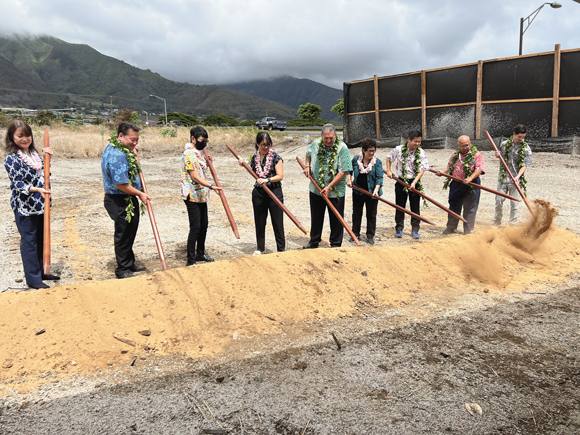
Photo courtesy Troy Hashimoto
The State and County have different agencies to deal with housing. At the State level, the Affordable Housing program is run by the Hawai‘i Housing Finance and Development Corporation, with the purpose of the program to help qualifying residents purchase homes for less than market rates.
At the County level, the Department of Housing and Human Concerns’ Housing Division has the objective to “create housing opportunities for low- and moderate-income residents through partnerships with community organizations with the objectives of: developing long-term affordable rental housing units; increasing availability of home ownership opportunities; and developing special needs housing with appropriate support services.”
Developers have to comply with Maui’s ordinance which generally requires at least twenty-five percent of a proposed development’s market units to be affordable housing. Under certain circumstances, a developer may also fulfill the requirements by paying a fee or the use of credits from other projects. (Developers usually must also provide infrastructure—roads, water, sewer and connections—associated with their development.)
If a resident qualifies for and purchases an affordable housing unit, there are restrictions as to the resale of such property for a period of time. Once the time passes, the resident can then sell at market price without the restriction.
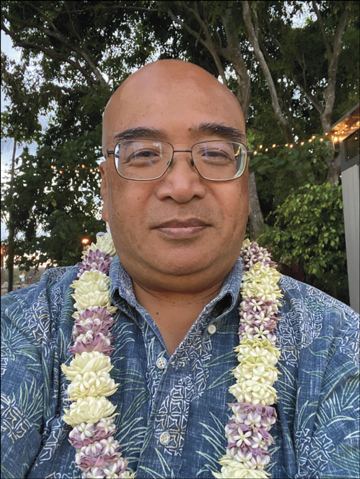
“Maui re-branded affordable housing as ‘workforce housing’ in Maui County Code chapter 2.96,” explains State Senator Gilbert Keith-Agaran. “ ‘Workforce housing’ is housing considered affordable under Federal Housing and Urban Development (HUD) guidelines for income groups ranging between 50 percent (very low income) to 140 percent (above moderate income) of the area median income as determined by HUD (with adjustments made for Hāna, Lāna‘i and Molokai).”
For the County of Maui, the Area Median Income (AMI) in 2022 is $101,100. This number is then adjusted for the number of family members.
Keith-Agaran says “The challenge is a lot of our workers likely don’t qualify under the HUD income guidelines for the units built as ‘workforce housing.’ In other words, their family income is above the 140 percent cut-off so they have to try and purchase what’s considered market units. One of my colleagues gives the example of a teacher married to a police office or another government worker. So it’s not surprising we continue to have a lot of multi-generational families living together as a necessity rather than because we have strong ‘ohana values. With the median price of a home on Maui hovering near a million dollars, we’re not addressing the housing needs for a lot of our working families.”
“The real goal should be to build units or incentivized housing construction of homes and neighborhoods that families above 140 percent can really afford given what people are paid in Maui County,” observes Keith-Agaran.
Stand Up Maui (SUM) formerly known as FACE Maui has been advocating for affordable housing for many years. In 2017, SUM asked the Maui County Council to establish a Comprehensive Affordable Housing Plan but was rejected. On August 28, 2020, the Council awarded to Hawaiian Community Assets, Inc. a $300,000 contract to create a comprehensive plan. The 264-page report was presented to the Council on July 19, 2021.
The Plan proposes five goals:
“Goal 1. Build 5,000 affordable homes for local residents at or below 120 percent area median income.
Goal 2. Provide sufficient funding to the Affordable Housing Fund to finance the development of needed affordable housing and community serving infrastructure.
Goal 3. Require developers to dedicate 20 percent of their land to affordable housing development and build housing that meets the needs of local residents when seeking resources from the Affordable Housing Fund.
Goal 4. Use county owned land to develop affordable housing.
Goal 5. Make the development process more accessible, predictable and timely.”
The Plan proposes to invest $1.169 billion: $380 million for infrastructure improvements and $789 million in rental and mortgage subsidies.
On October 21, 2021, UHERO, The Economic Research Organization at the University of Hawai‘i issued a 20-page analysis. Generally, the UHERO analysis found the Plan to be “a major step forward in developing coherent strategies to address Maui County’s shortage of affordable housing for lower-income households” but strongly suggested a few recommendations:
“We strongly suggest that a few key components of the Plan be modified to ensure its proposed ‘by-right’ regulatory framework for approving, planning, and developing land parcels with affordable housing does what the Plan’s authors intend: Increase the flow of new affordable housing units coming to market over the next 5–10 years,” UHERO said and added “the current version of by-right development presented in the Plan is flawed.”
“We recommend two other substantial changes to the Plan to ensure that its execution does not impede the private development of housing. The changes are important because the housing needs of Maui’s lower-income households can only be partially met by the additional affordable units to be developed by the County. Families across the Maui income spectrum need additional units to be brought to market by private landowners and developers,” added UHERO.
“With changes to a few key provisions,” UHERO concluded “the Plan could lead to a big increase in production of affordable housing on Maui. The Plan is a big step forward and the Maui County Council should move to adopt an amended version as its blueprint for this sector over the next decade.”
(In early 2021, the Council passed Bill 10 introduced by Councilmember Michael Molina by a 6–3 vote (Council Chair Alice Lee and Councilmembers Tasha Kama and Yuki Lei Sugimura voted no) that would increase the requirements of fast-tracked affordable housing requirements from 50 percent to 75 percent, making Maui the second-highest in the country—second only to three municipalities on the mainland who required 100 percent but saw a 60 percent decline in housing growth after the increase. Mayor Michael Victorino vetoed the bill and the Council, with Councilmember Kelly King switching, was unable to override Victorino’s veto.)
The Fil-Am Voice contacted Mayor Michael Victorino and Retired Judge Richard Bissen—one will be elected Maui’s Mayor in November—to answer several questions on affordable housing.

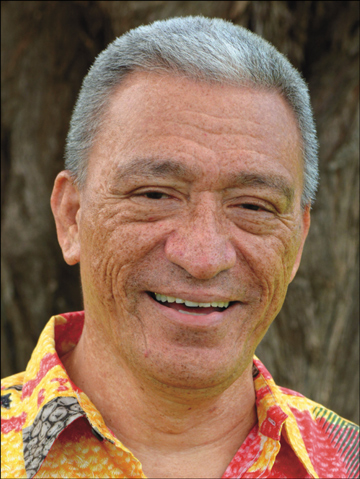
Question 1: Maui is facing an unprecedented housing crisis due to lack of inventory and as a result, median housing prices reached $1.2 million. According to the 2019 Housing Planning Study, the total workforce units needed for Maui from 2020 through 2025 are 10,400 units to meet the demand. What specific actions as Mayor will you do to address this housing crisis.
a. How many units do you plan to develop during your term as Mayor?
VICTORINO: Since I took office in 2019, 1,103 new housing units have been completed. There are currently 742 residential units under construction and 4,622 approved units are pending construction. At a minimum, 10,230 new housing units will be developed during my two terms, should I be re-elected. Of these, 5,756 will be “affordable” units our residents can rent or purchase.

BISSEN: First, we need to get to the root of the problem and understand WHO is in the housing crisis. There is a “lack of inventory” but why? Do we have developers applying to build homes? Are they trying to serve our Kama‘āina population? How many plans are awaiting permitting? Do the development policies in place allow permits to be granted in a timely manner? I believe part of the problem is the policies in place and the lack of adhering to our Maui County Comprehensive Affordable Housing Plan. We should either adhere to the policies created to expedite housing development OR create new or better policies. The Maui County Comprehensive Affordable Housing Plan: • The Plan identifies zoning and permit regulations and procedures that need to be streamlined and updated to facilitate timely completion of affordable housing projects. • The Plan clearly identifies complementary infrastructure investments that should be made simultaneously to support the new affordable housing projects.
As Mayor, it will be important to have knowledgeable leadership to head our departments that can remove redundant policies, build upon efficiencies and seek and implement best practices.
Current estimates indicate at least 5000 units are needed. There may be 3500 units in the ‘pipeline’ for permits but those are not assured to get to the building phase. And it’s not just the number of units we build, it’s who are we building them for? We’ve been looking at the wrong statistic. If we build 5000 units, and sell 4000 to people from outside the state because locals are not able to afford them, then what have we done?
b. Where do you plan to develop these workforce units.
VICTORINO: The majority of new residential construction is in Central Maui, including Kahului, Wailuku, and Waikapū. There are also various projects planned for South Maui, West Maui, one in Hāli‘imaile, one on Lāna‘i, and a small project in Hāna.
BISSEN: The Maui County Comprehensive Affordable Housing Plan identifies specific county-owned and state-owned land parcels on which 4,333 of the 5,000 affordable units would be built. Let’s start with the plans created. We shouldn’t spend money on studies if we won’t follow what is suggested.
c. When do you plan to develop these workforce units.
VICTORINO: Some are already under construction; many will break ground as soon as the Central Maui Wastewater Reclamation Facility and Wai‘ale Road extension are complete. Some projects are pending SMA permits and/or final subdivision approval. Many of the affordable units are included as part of larger developments with a mix of workforce and market-priced housing.
BISSEN: As soon as feasible. Some of these projects are awaiting permits. We need to get existing plans and applications moving forward. This would be quicker than starting a new development plan or new application. If housing is a crisis for our Kama‘āina, we need to respond in a like manner by streamlining the process (without sacrificing health, safety and environmental concerns) allocating the appropriate amount of funds within our budget and putting in the necessary infrastructure creating that critical public private partnership that can help drive prices down and demonstrate the County’s commitment to this effort. We will also focus on repurposing existing vacant commercial spaces/properties that already have sewer, water, electricity and parking as this would not only increase housing for our residents but help to revitalize those areas too.
D. What is the price range/area median income (AMI) for your proposed workforce units.
VICTORINO: Price guidelines are based upon median family income as established by the U.S. Department of Housing and Urban Development, the number of years for a fixed-rate mortgage with no discount points, percentage of gross household income for housing costs, number of bedrooms, and percentage of purchase price used for a down payment. Depending upon specific variables, the lowest purchase price for a 1-bedroom unit will range between $150,000 at the lowest income level (50 percent below AMI) up to $479,000 at the “gap income level” (up to 160 percent of AMI). Affordable rents are based on 30 percent of gross monthly income. There are some price variances among units depending upon location on Maui, Moloka‘i, Lāna‘i and Hāna.
BISSEN: Policies are set by the Council. Currently there is an attempt for the council to require 25 percent of housing within a development be capped at 28 percent of the AMI. The problem here is, a prior island council attempted to do something similar. That Council took the affordable guideline from 50 percent AMI down to 30 percent of the AMI. As a result, no developer applied to develop housing or built homes due to cost and risk. We need to have an open discussion with developers and make it a win-win. Building an affordable home isn’t the problem, it’s making sure the land value is affordable. We also can start building homes that match the applicant’s income. Have a flex zoning allowance that allows the developer to make real time changes when building to serve the applicant.
Question 2: What are the specific impediments/obstacles that are preventing the development of workforce housing units. And what specific actions will you take to address them during your first 100 days in office as Mayor.
VICTORINO: Impediments include requirements for critical infrastructure to be built before construction can begin on housing, lengthy delays in the permitting process, and overly complex zoning and building codes, and frankly put, additional conditions imposed by the County Council that challenge developers to be able to complete projects in a timely and affordable manner. My administration is already solving these problems. I have recommitted the County to build needed infrastructure and we are entering into public-private partnerships that exchange additional housing units for the developers’ obligation to contribute to infrastructure costs. To expedite permitting, we launched MAPPS (Maui’s Automated Planning & Permitting) system, an online system to replace KIVA Net and eliminates the need to move paperwork between offices. In addition, we’ve deployed a new “AHMN” (Affordable Housing Maui Nui) process that brings developers and permitting staff together early in the development process to identify potential problems and solutions to prevent lengthy and costly delays. Finally, I have asked our Planning Department to review the County building codes for consistency, identify conflicts and update them. This has not been done since 1960 and inconsistencies in the code often delay permit approvals.
BISSEN: The first three are water, the cost of land and the lack of good paying jobs (too many jobs are minimum income jobs and the <60 percent AMI workforce are boxed out of home/property ownership). In addition, the method of allocating infrastructure costs to developers upfront instead of to the ultimate property owners over time, the uncertainty of getting a permit in a reasonable amount of time, and the lack of consistency in the State rules, County policies and ordinances, the Maui Island Plan, and the various Community plans. When an affordable housing permit is applied for, I will require all department heads to meet with the developer at the same time to discuss concerns with the proposal. I will assign a designated member of my team (the Chief of Staff or executive assistant) to monitor that permit and report to me weekly with an aging report on the progress of that project to its completion. In the first 180 days we will strive to approve 100 new ADU (accessory dwelling unit) permits. We will offer three pre-approved floor plans (studio, 1 bedroom, 2 bedroom) that, if selected AND connected to the county water and sewer system, would receive a building permit to begin construction on that homeowner’s existing property. We will also seek out the most efficient and expeditious permitting process and best practices in the United States or global community and see if we are able to apply any or all of their processes to our housing situation fully recognizing our unique environmental and cultural history and preferences. We will ask our own employees/experts, the private sector, developers, realtors, contractors and any others who work in the permitting process about their ideas regarding the approval process, redundancies and areas where we can improve our efficiency and customer service. We can say that housing is a priority or we can show that housing is a priority, through our actions.
Question 3: A charter amendment is proposed to bifurcate the Department of Housing and Human Concerns. Do you support this amendment, and if so, how will this proposal help build more workforce housing units for hard working families on Maui.
VICTORINO: I support dividing the Department of Housing and Human Concerns into two departments only if the Maui County Council is committed to funding the type of staffing required for an effective Department of Housing. This would include staff planners, CIP specialists, project managers, civil engineers and so on. Government at all levels is slower than private industry due to the need for public consultation and a tendency to prioritize process over productivity. My Administration has worked collaboratively with developers who are capable and willing to help meet our housing needs. A bi-furcated Department with the needed resources can help entitle land, expedite zoning issues, and then allow developers to take over and do what they do best. I believe the private sector is more efficient than the public sector at building housing, but perhaps both are needed during these times. Staffing a new Housing Department won’t be cheap, but a benefit is the Department of Human Concerns would be able to focus on delivering social services to those who need them.
BISSEN: I believe that before we even consider the bifurcation of the Department of Housing and Human Concerns we need to effectively assess and address their issues and maximize efficiencies in the current system and department. There will be additional overhead costs, which could mean increased taxes, for adding a new County department. We should not take this lightly, especially when it comes to our taxpayer’s hard-earned dollars. Additionally, time and time again we’ve seen that added layers of bureaucracy can impede affordable housing development in Hawai‘i. Creating housing is an absolute priority, and I do support isolating focus and responsibilities in pursuit of efficiency. However, we must ensure that our government growth matches our current tax revenue. I strongly believe that we can invest our time and resources in improving our current department without causing additional cost burdens for our citizens.
Finally, the two candidates were asked a separate, different question.
VICTORINO’s question: How many workforce housing units were completed/acquired/preserved (please itemize under each category) during your first term as Mayor? How many are currently in the development stages and the anticipated dates for the completion of each proposal. (Answer in tan box.)
BISSEN’s question: “Kama‘āina Housing” is one of your political platforms. Please explain in detail what that means such as who qualifies: locally born; years of residency; ethnicity; etc.
Kama‘āina housing is a 5 step plan intended to create housing for Maui County residents, it is not based on where you were born or your ethnicity. You must, however, qualify for a homeowner’s exemption which is a reduction in your tax assessed value of your primary residence that you actually live in (not a second home or vacation home). This will only impact the homes in these proposed subdivisions and not homes already built or offered by other private developers or projects. Our plan urges the County to: 1) Create an inventory of lands that are “appropriate” for home building, as determined by input from the community, 2) The County will provide the infrastructure (roads, sewer, water) mostly through available federal funds, which will create a public private partnership with the developer; 3) The home buyer must qualify as a Maui resident by being eligible for a homeowners tax exemption and the home can only be sold to other kama‘āina who qualify for a homeowner’s exemption, in perpetuity; 4) The County will provide financial literacy for the applicants to assist with qualifying for a mortgage loan and maintaining your monthly mortgage payments and 5) The County will assist by working with a bank or mortgage company to try and obtain a group discounted down payment and mortgage interest rates (based on the volume of customers).
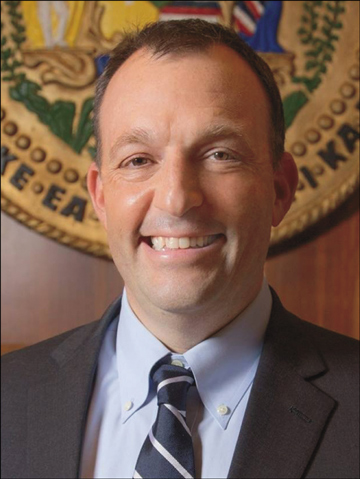
Even the gubernatorial candidates have Affordable Housing as one of their important issues. For the Democrats, Lt. Gov. Josh Green posted his ten-point plan on his website and titled it “Emergency Housing Plan for Hawai‘i”:
1. Immediately issue an executive order to all state and county housing agencies to speed up construction of affordable housing by eliminating red tape, streamlining processes and approvals, and coordinating efforts to address the crisis.
2. Make housing for Hawai‘i residents our top priority by aggressively enforcing existing laws to shut down the 25,000 illegal vacation rentals across the state, taxing the 35,000 vacant investor units, and limiting permits and increasing taxes on new luxury developments by out of state investors.
3. Create a “Path to Home Ownership” for first-time home buyers and essential workers with a new state-subsidized loan program, including financial education and assistance to help navigate the home buying process.
4. Create an Office of Emergency Housing to serve as a “one stop shop” to eliminate bureaucratic red tape and provide faster services and approvals.
5. Use vacant state lands to build affordable homes and rentals with federal, state, and private partnerships.
6. Continue to increase the rental housing revolving fund, increase the low-income housing tax credit, and create new deductions and incentives for long term rentals to low- and middle-income families.
7. Direct the Department of Hawaiian Homelands to deliver land immediately to Native Hawaiian beneficiaries for homesteading, and to work with the Office of Hawaiian Affairs to build housing for Native Hawaiians.
8. Reduce homelessness by building kauhale housing villages and funding new programs, services, and incentives such as vouchers to house the homeless.
9. Work with the counties to lower the costs of building affordable housing by addressing water, sewer, park, and other fees as well as zoning and exaction requirements, all while maintaining environmental protections.
10. Work with Hawai‘i’s Congressional delegation to increase federal housing voucher funding, homeless funding, infrastructure funding, and a bond cap increase to build housing.

For the Republicans, former Lt. Governor James R. Aiona, Jr. recently called a News Conference to announce his four-point plan titled “Hawai‘i Home Ownership Initiative”:
1. Preserving And Growing Affordable Housing For Local Residents
The solution is to not only increase the supply of housing, but to make sure it is preserved for our local market through local wages.
• This is accomplished by keeping the future sale of any affordable home at the same income range that it was purchased at.
• Creating a local market by preserving the income range of the purchase of affordable housing for future affordable home buyers.
2. Creation And Implementation Of Whole-Of-Government Approach
• Appointing a Chief Officer of Affordable Housing within the cabinet of the Executive Branch that is empowered to coordinate, leverage and deploy all efforts and resources and execute cross cutting measures directed to expeditiously build affordable homes.
3. Create And Enhance Existing Financial Home Buying Programs
• Enhance Hula Mae for buyers of affordable housing.
• Transition governmental rental programs to tenant owned.
4. Attract And Empower Local Families, Businesses And Individuals To Create A “Hui” To Build Affordable Homes And Rentals
• A local “Hui” of families, businesses, and individuals are encouraged to build affordable housing at a reduced profit through the state’s reduction of their development costs by guaranteeing a portion of the development’s financing.
• State guarantee 100 percent financing with non-recourse lending.
• Enhance HRS 201H and revisit the Land Use Commission’s mission to assuring that proposed housing projects will benefit the people of Hawai‘i through affordable housing.
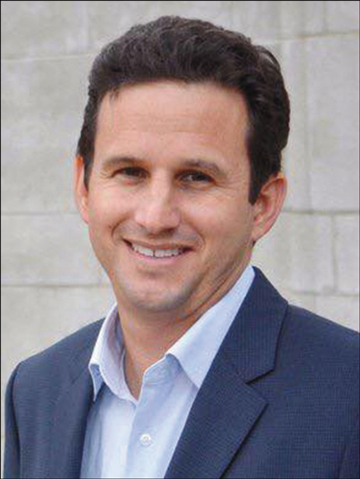
Just prior to the pandemic, U.S. Senator Brian Schatz and legislative leaders convened a series of meetings of key legislators, the mayors, planning officials and legislators to discuss ways to address the growing ALICE (Asset Limited, Income Constrained, Employed) population in Hawaii. They reached consensus on a number of proposals to address cost of living challenges, including adopting an Earned Income Tax Credit, streamlining certain state and county processes for housing projects and providing government support for infrastructure. Then the pandemic came, two of the Mayors were term limited, and only a few of the proposals were enacted by the state and some of the counties.
After November, the new Governor and new Mayor, and the county councils and legislators elected will have the opportunity to implement their plans. In 2024, however, will the incumbents and their challengers still be talking about the need to build more housing residents can afford?
 Alfredo G. Evangelista is a graduate of Maui High School (1976), the University of Southern California (1980), and the University of California at Los Angeles School of Law (1983). He is a sole practitioner at Law Offices of Alfredo Evangelista, A Limited Liability Law Company, concentrating in estate planning, business start-up and consultation, nonprofit corporations and litigation. He has been practicing law for 38 years (since 1983) and returned home in 2010 to be with his family and to marry his high school sweetheart, the former Basilia Tumacder Idica. They are celebrating their ninth wedding anniversary this month.
Alfredo G. Evangelista is a graduate of Maui High School (1976), the University of Southern California (1980), and the University of California at Los Angeles School of Law (1983). He is a sole practitioner at Law Offices of Alfredo Evangelista, A Limited Liability Law Company, concentrating in estate planning, business start-up and consultation, nonprofit corporations and litigation. He has been practicing law for 38 years (since 1983) and returned home in 2010 to be with his family and to marry his high school sweetheart, the former Basilia Tumacder Idica. They are celebrating their ninth wedding anniversary this month.
